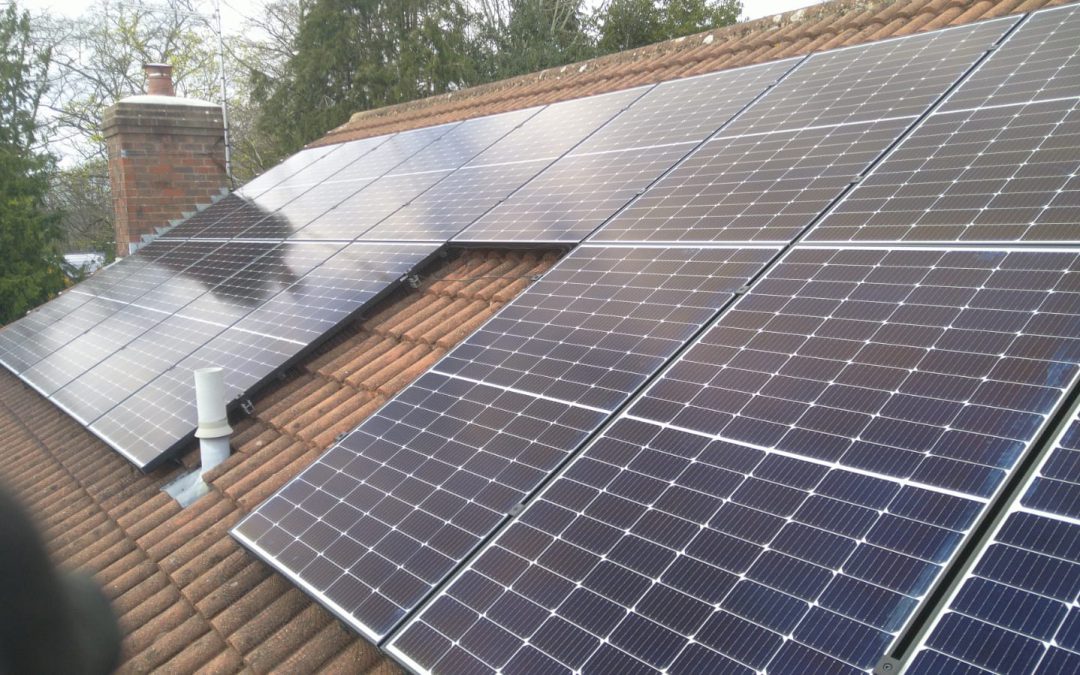Solar PV stands for Solar Photovoltaic
It is a technology that converts sunlight into electricity by utilizing the photovoltaic effect. This is a process in which semiconducting materials generate voltage and current when exposed to light. A solar PV panel is made up of many cells that are constructed from semi-conducting material, usually silicon. When sunlight hits these cells, it creates an electrical current that can be used to power your home. By installing solar panels or solar PV panels, you can generate your own renewable electricity and save money by harvesting this free energy from the sun.
In this blog post, we’ll explain how solar PV works, what are its benefits and drawbacks, and what are some examples of solar PV applications.
How does solar PV work?
Solar PV systems consist of three main components: solar panels, inverters, and meters.
- Solar panels are devices that contain many solar cells, which are made of semiconductor materials such as silicon. When sunlight hits the solar cells, they generate direct current (DC) electricity.
- Inverters are devices that convert DC electricity into alternating current (AC) electricity, which is the standard form of electricity used in most appliances and devices. Inverters also regulate the voltage and frequency of the electricity to match the grid or the load requirements.
- Meters are devices that measure the amount of electricity produced by the solar PV system, as well as the amount of electricity consumed or exported to the grid. Meters help monitor the performance and efficiency of the system, as well as calculate the savings or earnings from using solar power.
Solar PV systems can be classified into two main types: grid-connected and off-grid.
- Grid-connected solar PV systems are connected to the public electricity network, and can either supply power to the grid or draw power from it. Grid-connected systems can reduce or eliminate the electricity bills of the users, as they can sell their excess electricity to the grid through schemes such as the Smart Export Guarantee (SEG) in the UK. Grid-connected systems can also provide backup power in case of grid failures or blackouts.
- Off-grid solar PV systems are not connected to any electricity network, and rely on batteries or generators to store or supplement their power. Off-grid systems are suitable for remote areas or locations where grid access is unreliable or expensive. Off-grid systems can provide complete energy independence and security for the users, but they may also require more maintenance and management.
What are the benefits and drawbacks of solar PV?
Solar PV has many advantages and disadvantages that depend on various factors such as the location, size, design, and cost of the system. Here are some of the main pros and cons of solar PV:
Benefits
- Save money on energy bills: By generating your own electricity from sunlight, you can reduce your dependence on grid power and lower your energy costs. According to the Energy Saving Trust, a typical household using 4,000kWh of energy a year will save £550 on bills in their first year investing in solar panels.
- Earn money from excess electricity: If you have a grid-connected system and you produce more electricity than you use, you can earn money by selling it back to the grid through schemes such as SEG1. SEG pays you for every kilowatt-hour (kWh) of electricity you export at a rate set by your energy supplier.
- Reduce your carbon footprint: Solar PV generates clean and renewable energy that does not emit any greenhouse gases or pollutants. By switching to solar power, you can reduce your household’s carbon emissions by up to 1.2 tonnes per year, which is equivalent to planting 60 trees.
- Increase your home value: Solar PV can enhance the attractiveness and value of your property, as it shows that your home is energy-efficient and environmentally friendly. According to a study by Zillow, homes with solar panels sell for 4.1 per cent more than comparable homes without solar4.
- Low maintenance: Solar PV systems are durable and require little maintenance. They usually come with a manufacturer warranty of 20 to 25 years, and they can last even longer with proper care. The only regular maintenance needed is cleaning the panels from dust or dirt that may affect their performance.
- Financial support available: You may be eligible for grants or loans to help you pay for the installation of solar PV systems. For example, the Green Homes Grant scheme offers vouchers of up to £5,000 for homeowners in England to install low-carbon heating systems such as solar thermal panels.
Drawbacks
- Expensive installation: The upfront cost of solar PV systems can be high, depending on the size and quality of the system. You may need to save up or borrow money to afford them. The average cost of a 3.5kW system in the UK is £6,500.
- Long payback period: It may take several years for you to recoup your initial investment through energy savings and SEG payments. The payback period depends on factors such as your electricity consumption, your location, and the price of electricity. The Energy Saving Trust estimates the payback period for a 3.5kW system in the UK as follows: Home all day 11 years with SEG, 13 years without SEG. Home in mornings 13 years with SEG, 16 years without SEG and Home in afternoons 13 years with SEG, 18 years without SEG.
- Performance is affected by weather: Solar PV systems work best in sunny conditions, but their output can vary depending on the season, the time of day, and the cloud cover. You may need a backup source of power or a battery storage system to ensure a reliable supply of electricity.
- Not all roof types are suitable: Solar PV systems need a large, flat, south-facing roof that is not shaded by trees or buildings. If your roof is not suitable for solar PV, you may need to modify it or install the panels on the ground.
- Take up a lot of space: Solar PV systems can cover a significant area of your roof or land, which may affect the aesthetics and functionality of your property. You may also need extra space for other components such as inverters and batteries.
- Expensive to move: If you decide to move house, you may face difficulties in transferring or removing your solar PV system. You may need to pay a fee to disconnect it from the grid, or negotiate with the new owners or tenants to take over the system.
What are some examples of solar PV applications?
Solar PV can be used for various purposes and in various settings, such as:
- Residential: Solar PV can power homes with electricity for lighting, heating, cooling, appliances, and devices. Solar PV can also be integrated into building materials such as tiles, shingles, windows, and facades.
- Commercial: Solar PV can power businesses with electricity for offices, shops, factories, warehouses, and farms. Solar PV can also be installed on rooftops, carports, parking lots, and other structures.
- Community: Solar PV can power communities with electricity for schools, hospitals, libraries, churches, and other public buildings. Solar PV can also be shared among multiple users through community-owned or cooperative schemes.
- Utility: Solar PV can power utilities with electricity for large-scale generation and distribution. Solar PV can also be connected to the grid or microgrids to provide backup or peak power.
- Off-grid: Solar PV can power off-grid locations with electricity for remote areas or regions where grid access is unreliable or expensive. Solar PV can also be used for humanitarian or emergency purposes such as disaster relief or refugee camps.
Some examples of solar PV projects around the world are:
- Solar Star PV power station: This is the largest solar PV power plant in the US, located in California. It has a capacity of 579 megawatts (MW) and covers an area of 13 square kilometers (km2).
- Topaz Solar Farm and Desert Sunlight Solar Farm: These are two of the largest solar PV power plants in the world, both located in California. They each have a capacity of 550 MW and cover an area of about 25 km2.
- Kamuthi Solar Power Project: This is the largest solar PV power plant in India, located in Tamil Nadu. It has a capacity of 648 MW and covers an area of 10 km2.
- Longyangxia Dam Solar Park: This is the largest solar PV power plant in China, located in Qinghai. It has a capacity of 850 MW and covers an area of 27 km2.
- Noor Abu Dhabi: This is the largest solar PV power plant in the Middle East, located in Abu Dhabi. It has a capacity of 1.18 gigawatts (GW) and covers an area of 8 km2.
Conclusion
Solar PV is a technology that converts sunlight into electricity. It has many benefits such as saving money on energy bills, earning money from excess electricity, reducing carbon footprint, increasing home value, and providing financial support. It also has some drawbacks such as expensive installation, long payback period, performance affected by weather, not all roof types suitable, taking up a lot of space, and expensive to move.
Solar PV can be used for various applications such as residential, commercial, community, utility, and off-grid. Some examples of solar PV projects around the world are Solar Star PV power station in California and the Topaz Solar Farm and Desert Sunlight Solar Farm in California.
Are you ready to invest in Solar Panels and convert to clean, renewable energy?
If you are a UK homeowner and interested in learning more about the different types of Solar PV systems, contact our expert team today. By filling out our contact form, our team will provide you with a free no-obligation quote to install a bespoke solar PV system, catered to your energy needs. Call us on 01268 928 690 or click the ‘Enquire Now’ button below to claim your free no-obligation quote and solar PV system design.
Frequently Asked Questions about Solar Panels
The short answer is yes. Solar panels can cut 70% off your energy bills, and that proportion is growing as gas bills rise. No wonder installations have risen by 45% in the last three years, and shot up by 80% in the last year alone. But solar panels are an investment.
1-2 bedroom property, 6 solar panels generating about 1,600 kWh a year.
3 bedroom property, 10 solar panels generating about 2,650 kWh a year.
4-5 bedroom property, 14 solar panels generating about 3,700 kWh a year.
The answer depends on how much you pay for the solar panels, how much your electricity would otherwise cost, how much green energy the panels make from the sunshine you get, and whether you have a battery installed or not. The average payback period for solar PV is coming down and can be about 10 to 20 years depending on your system.
The industry standard for most solar panels’ lifespans is 25 to 30 years. Most reputable manufacturers offer production warranties for 25 years or more. The average break even point for solar panel energy savings occurs six to 10 years after installation.
Whilst there is no hard and fast rule as to how much value solar panels can add to the overall value of your property, suggestions range from 4% to 14% on average and they are certainly unlikely to detract from the value of your home, even if they aren’t the most attractive feature visually.
Latest Solar Panel Posts
- Why Leisure Centres Should Invest in Solar Panels
 In recent years, the concept of sustainability has become increasingly vital in various industries, including leisure centres. As the global focus shifts towards environmental conservation and renewable energy sources, leisure centres are recognizing the importance of investing in sustainable practices to reduce their operating costs and their carbon footprint. One such sustainable solution gaining traction… Read more: Why Leisure Centres Should Invest in Solar Panels
In recent years, the concept of sustainability has become increasingly vital in various industries, including leisure centres. As the global focus shifts towards environmental conservation and renewable energy sources, leisure centres are recognizing the importance of investing in sustainable practices to reduce their operating costs and their carbon footprint. One such sustainable solution gaining traction… Read more: Why Leisure Centres Should Invest in Solar Panels - Solar Panels and EPC Ratings
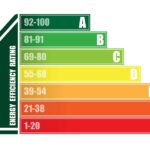 Solar panels have become increasingly popular as a sustainable energy solution, offering numerous benefits for both residential and commercial properties. In parallel, Energy Performance Certificate (EPC) ratings serve as indicators of a building’s energy efficiency. Understanding how solar panels can impact EPC ratings is crucial for maximizing energy savings and environmental benefits. This blog post… Read more: Solar Panels and EPC Ratings
Solar panels have become increasingly popular as a sustainable energy solution, offering numerous benefits for both residential and commercial properties. In parallel, Energy Performance Certificate (EPC) ratings serve as indicators of a building’s energy efficiency. Understanding how solar panels can impact EPC ratings is crucial for maximizing energy savings and environmental benefits. This blog post… Read more: Solar Panels and EPC Ratings - SunSynk Batteries: Innovative Energy Storage
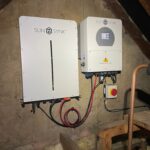 SunSynk Batteries have emerged as a leading solution in the realm of energy storage, offering a range of innovative features and benefits that cater to various applications. With a focus on sustainability and cutting-edge technology, SunSynk Batteries have captured the attention of residential, commercial, and industrial consumers alike. This blog post delves into the intricate… Read more: SunSynk Batteries: Innovative Energy Storage
SunSynk Batteries have emerged as a leading solution in the realm of energy storage, offering a range of innovative features and benefits that cater to various applications. With a focus on sustainability and cutting-edge technology, SunSynk Batteries have captured the attention of residential, commercial, and industrial consumers alike. This blog post delves into the intricate… Read more: SunSynk Batteries: Innovative Energy Storage - Solar Industry Update: Battery Installations in Lofts
 The British Standards Institute (BSI) has recently released new recommendations regarding home battery installations, including those in loft spaces. One common inquiry we receive from our customers following the publication of the Publicly Available Specification (PAS) is whether a solar battery can be installed in a loft. The answer is a resounding yes, with some… Read more: Solar Industry Update: Battery Installations in Lofts
The British Standards Institute (BSI) has recently released new recommendations regarding home battery installations, including those in loft spaces. One common inquiry we receive from our customers following the publication of the Publicly Available Specification (PAS) is whether a solar battery can be installed in a loft. The answer is a resounding yes, with some… Read more: Solar Industry Update: Battery Installations in Lofts - Voltage Optimisers, What Are They and How Do They Work?
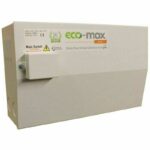 What is voltage optimisation? A voltage optimiser is a smart device that can help you save energy and reduce your carbon footprint. It works by adjusting the power supply from the National Grid to the ideal level for your electrical devices and appliances at home or work. This way, you can use less electricity and… Read more: Voltage Optimisers, What Are They and How Do They Work?
What is voltage optimisation? A voltage optimiser is a smart device that can help you save energy and reduce your carbon footprint. It works by adjusting the power supply from the National Grid to the ideal level for your electrical devices and appliances at home or work. This way, you can use less electricity and… Read more: Voltage Optimisers, What Are They and How Do They Work? - String Inverter vs Microinverter: Centralized vs Modular
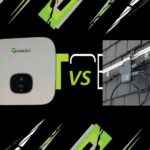 Imagine waking up to a sunny morning, not just because the birds are chirping, but because your roof is silently turning sunlight into clean energy for your entire home. That’s the beauty of solar power, but with all the different equipment options, it can feel overwhelming. One crucial decision you’ll face is choosing between string… Read more: String Inverter vs Microinverter: Centralized vs Modular
Imagine waking up to a sunny morning, not just because the birds are chirping, but because your roof is silently turning sunlight into clean energy for your entire home. That’s the beauty of solar power, but with all the different equipment options, it can feel overwhelming. One crucial decision you’ll face is choosing between string… Read more: String Inverter vs Microinverter: Centralized vs Modular

